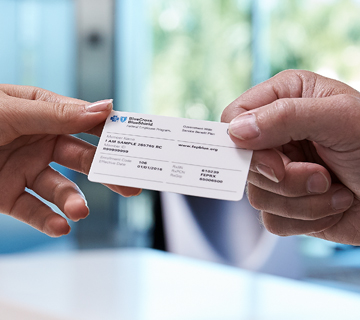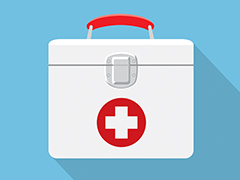Know Before You Go

Are you or someone you love planning to get an important medical procedure done soon? To get the most out of your benefits, we recommend making sure that you stay in-network for your care.
What does in-network mean?
Preferred (in-network) providers agree to accept our allowance as payment in full for their services. You only have to pay your deductible (if you have Standard Option or FEP Blue Focus), copay and/or your share of our allowance (known as coinsurance). This limits the amount you pay out of pocket.
What does out-of-network mean?
Non-preferred (out-of-network) providers do not agree to accept our allowance as payment in full for their services. You usually pay more out-of-pocket when you visit these providers. Here’s why:
- If you have Standard Option, you pay your portion plus the difference between what we pay and what the provider charges.
- If you have Basic Option or FEP Blue Focus, you pay the provider’s full charge. There are very few exceptions, such as emergency care.
How do I find Preferred providers?
You can find Preferred providers here. You can search for a provider by specialty, location and more.
If you’re planning a trip to a hospital, surgery center or other facility (we’ll just use the term ‘hospital’ going forward), here’s what’s important to know:
Sometimes there are doctors who work in a Preferred hospital, who do not contract with us. This means that they are not part of the Preferred network even if the hospital itself is. It’s best to call your local Blue Cross and Blue Shield company to make sure all doctors are in your network.
These hospital-based doctors can include:
- Anesthesiologists
- Emergency room (ER) doctors
- Neonatologists (doctors who care for newborns who need special attention or care)
- Pathologists (doctors who use lab work to study and diagnose diseases)
- Radiologists (doctors who use imaging to diagnose and study diseases)
What does that mean for you?
If you see one of these providers, you will most likely pay more out-of-pocket. However, if you prepare before your trip to the hospital, you could save yourself a lot of money.
Here’s how: Call the customer service number on the back of your member ID card before you receive your care. Ask customer service to help you find hospitals that have doctors who participate in the network.
Setting up your care appointment
Here’s a quick checklist that can help you prepare:
- Review your benefits. Make sure you know if your service is covered before you set the appointment. You can review your benefits brochure at any time here.
- Find a Preferred facility for your care. Locate a Preferred hospital using our online provider directory.
- Confirm that all the doctors who will be treating you are Preferred, too. Call the customer service number on the back of your member ID card to speak to a representative. They can tell you which doctors at the hospital participate in our network.
- Get your service pre-approved, if necessary. Some services, such as inpatient hospital stays, need to be approved before we’ll pay benefits for them. Learn more in section 3 of the brochure.
- If you have any questions: ASK. Never hesitate to call customer service if you have any questions about your benefits or potential out-of-pocket costs. They’re here to help.
What happens if you have an emergency?
In a life-threatening situation, always call 911 or go to your nearest emergency room. Don’t worry about the network because your health and safety always come first.
If you’re not in a life-threatening situation, consider visiting your primary doctor, a retail clinic or an urgent care center. If you need health advice, remember you can also call the Nurse Line at 1-888-258-3432. You can speak to a registered nurse 24 hours a day, 7 days a week.
Download our Know Before You Go Guide to learn more


